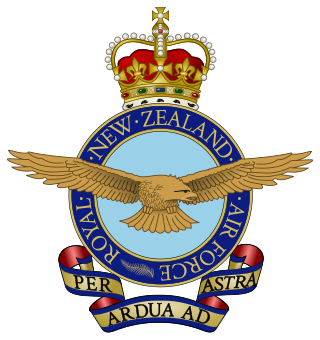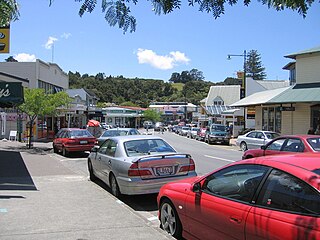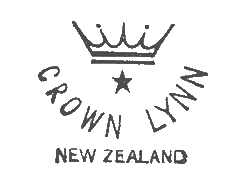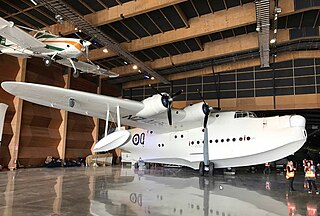
The Royal New Zealand Air Force is the aerial service branch of the New Zealand Defence Force. It was formed initially in 1923 as a branch of the New Zealand Army, being known as the New Zealand Permanent Air Force, becoming an independent air force on 1 April 1937.

Warkworth is a town on the Northland Peninsula in the upper North Island of New Zealand. It is in the northern part of the Auckland Region. It is located close to State Highway 1, 64 km (40 mi) north of Auckland and 98 km (61 mi) south of Whangārei, and is at the head of Mahurangi Harbour.

New Lynn is a residential suburb in West Auckland, New Zealand, located 10 kilometres to the southwest of the Auckland city centre. The suburb is located along the Whau River, one of the narrowest points of the North Island, and was the location of Te Tōanga Waka, a traditional waka portage between the Waitematā and Manukau harbours.

Whenuapai is a suburb and aerodrome located in northwestern Auckland, in the North Island of New Zealand. It is located on the shore of the Upper Waitematā Harbour, 15 kilometres to the northwest of Auckland's city centre. It is one of the landing points for the Southern Cross telecommunications Cables.

Wellsford is a town on the Northland Peninsula in the northern North Island of New Zealand. It is the northernmost major settlement in the Auckland Region, and is 77 kilometres (48 mi) northwest of the Auckland CBD. It is a major regional centre, being located at the junction of State Highways 1 and 16, almost halfway between Auckland and the Northland city of Whangārei.

Snells Beach is a small coastal town in the north of Auckland Region in the North Island of New Zealand. It is situated on the eastern coast of the Mahurangi Peninsula and its namesake beach faces east across Kawau Bay to Kawau Island. The nearest town is Warkworth, 8 km (5.0 mi) to the west, which is linked by 8 buses a day and also Mahu City Express twice a day.

Hobsonville is a suburb in West Auckland, in the North Island of New Zealand. Historically a rural settlement, Hobsonville has now developed into a suburb of Auckland.

Crown Lynn was a New Zealand ceramics manufacturer that operated under various names between 1854 and 1989.

Rice Owen Clark was an English settler in New Zealand, establishing a brickworks at Hobsonville that was the origin of Crown Lynn and Ceramco.

Hobsonville Point Secondary School is a state coeducational secondary school located in the Auckland, New Zealand suburb of Hobsonville. Opened in February 2014, it is the second school in New Zealand to be built under a public-private partnership, whereby the school buildings are constructed, maintained and managed separate from the school management by a private consortium. The school has a roll of 854 as of August 2024.
Sir Thomas Edwin Clark was a New Zealand industrialist who played a major role in a number of different enterprises. He was a patron of New Zealand's involvement in international yachting. He was the driving force in the development of Crown Lynn, a ceramics manufacturer begun by his great-grandfather Rice Owen Clark in the mid-1850s.
The 2021 New Year Honours in New Zealand were appointments by Elizabeth II in her right as Queen of New Zealand, on the advice of the New Zealand government, to various orders and honours to reward and highlight good works by New Zealanders, and to celebrate the passing of 2020 and the beginning of 2021. They were announced on 31 December 2020.

West Auckland is one of the major geographical areas of Auckland, the largest city in New Zealand. Much of the area is dominated by the Waitākere Ranges, the eastern slopes of the Miocene era Waitākere volcano which was upraised from the ocean floor, and now one of the largest regional parks in New Zealand. The metropolitan area of West Auckland developed between the Waitākere Ranges to the west and the upper reaches of the Waitematā Harbour to the east. It covers areas such as Glen Eden, Henderson, Massey and New Lynn.

The Short Sunderland was developed as a long range maritime reconnaissance flying boat and was widely used during the Second World War. New Zealand purchased four Sunderlands in early 1944 for use as transport aircraft but did not receive them until the end of that year. They were operated by the Flying Boat Transport Flight of the Royal New Zealand Air Force (RNZAF) from February 1945, carrying cargo and repatriated New Zealand military personnel from the South Pacific back to New Zealand. They soon began carrying paying passengers and in late 1947 the Sunderlands were transferred to the New Zealand National Airways Corporation. Used on passenger routes between Auckland and Fiji for a few years, they were eventually returned to the RNZAF.

Jackie Clark is a New Zealand philanthropist and advocate for women. She established The Aunties, a charity helping vulnerable women and children who have experienced domestic violence.

Oruamo or Hellyers Creek is a stream and tidal estuary of Upper Waitematā Harbour in the Auckland Region of New Zealand's North Island. It flows through the western North Shore.

Air Commodore Sidney Wallingford, was a British-born New Zealand aviator and senior officer in the Royal New Zealand Air Force (RNZAF) during the Second World War.

The Hobsonville Church & Settlers' Cemetery is a historic church building and cemetery located in Hobsonville, Auckland, New Zealand, and listed as a Category II building by Heritage New Zealand.

Clark Cottage, also known as Duke House, is an early 20th century historic ceramic brick villa located in Hobsonville, Auckland.

Ockleston House was a historic house in Hobsonville, Auckland, New Zealand. Constructed in the 19th century as a cottage it was expanded over the years into a large house. During the construction of the Upper Harbour Motorway the property was demolished. Prior to demolition it was dismantled carefully for archaeological evaluation.





















